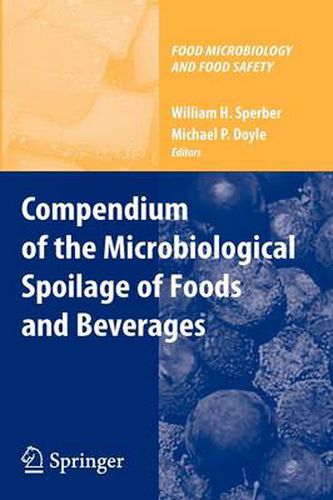Readings Newsletter
Become a Readings Member to make your shopping experience even easier.
Sign in or sign up for free!
You’re not far away from qualifying for FREE standard shipping within Australia
You’ve qualified for FREE standard shipping within Australia
The cart is loading…






This title is printed to order. This book may have been self-published. If so, we cannot guarantee the quality of the content. In the main most books will have gone through the editing process however some may not. We therefore suggest that you be aware of this before ordering this book. If in doubt check either the author or publisher’s details as we are unable to accept any returns unless they are faulty. Please contact us if you have any questions.
The increased emphasis on food safety during the past two decades has decreased the emphasis on the loss of food through spoilage, particularly in developed co- tries where food is more abundant. In these countries spoilage is a commercial issue that affects the pro?t or loss of producers and manufacturers. In lesser developed countries spoilage continues to be a major concern. The amount of food lost to spoilage is not known. As will be evident in this text, stability and the type of spoilage are in?uenced by the inherent properties of the food and many other factors. During the Second World War a major effort was given to developing the te- nologies needed to ship foods to different regions of the world without spoilage. The food was essential to the military and to populations in countries that could not provide for themselves. Since then, progress has been made in improved product formulations, processing, packaging, and distribution systems. New products have continued to evolve, but for many new perishable foods product stability continues to be a limiting factor. Many new products have failed to reach the marketplace because of spoilage issues.
$9.00 standard shipping within Australia
FREE standard shipping within Australia for orders over $100.00
Express & International shipping calculated at checkout
This title is printed to order. This book may have been self-published. If so, we cannot guarantee the quality of the content. In the main most books will have gone through the editing process however some may not. We therefore suggest that you be aware of this before ordering this book. If in doubt check either the author or publisher’s details as we are unable to accept any returns unless they are faulty. Please contact us if you have any questions.
The increased emphasis on food safety during the past two decades has decreased the emphasis on the loss of food through spoilage, particularly in developed co- tries where food is more abundant. In these countries spoilage is a commercial issue that affects the pro?t or loss of producers and manufacturers. In lesser developed countries spoilage continues to be a major concern. The amount of food lost to spoilage is not known. As will be evident in this text, stability and the type of spoilage are in?uenced by the inherent properties of the food and many other factors. During the Second World War a major effort was given to developing the te- nologies needed to ship foods to different regions of the world without spoilage. The food was essential to the military and to populations in countries that could not provide for themselves. Since then, progress has been made in improved product formulations, processing, packaging, and distribution systems. New products have continued to evolve, but for many new perishable foods product stability continues to be a limiting factor. Many new products have failed to reach the marketplace because of spoilage issues.